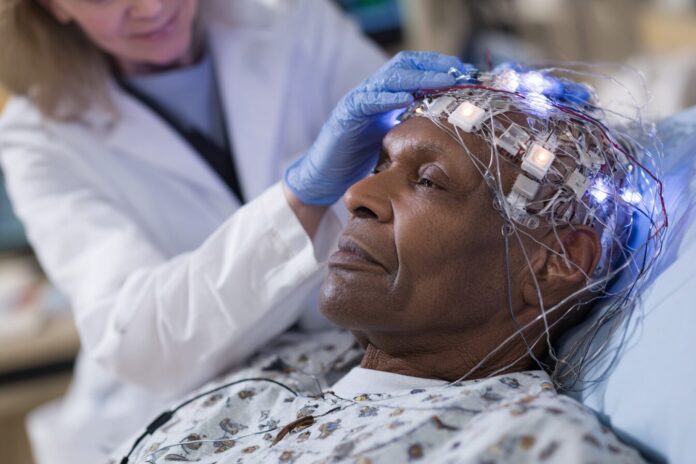A Revolutionary Leap in Neuroprosthetic Communication
Imagine losing the ability to speak; every thought remains crystal clear, yet the voice is lost to a debilitating disease. Most importantly, breakthrough brain implant technology now offers renewed hope to those suffering from ALS. This advanced neuroprosthetic system restores not only speech but the very essence of a patient’s personal tone and timbre. Because it provides real-time translation of thought into spoken words, this technology revolutionizes the way we understand assistive communication.
Understanding ALS and the Need for Innovation
ALS, or Lou Gehrig’s disease, attacks the nerve cells responsible for voluntary actions. Gradually, patients lose the ability to walk, manipulate objects, and most painfully, to speak. Historically, the available communication aids were slow and mechanically generated. For instance, early systems, similar to those used by Stephen Hawking, relied on eye-tracking keyboards. Therefore, many patients received a generic, robotic voice that stripped away personal identity. Besides that, the delay in communication only deepened social isolation.
The Breakthrough: Direct Brain-to-Computer Communication
Researchers at UC Davis Health have transformed this narrative. By surgically implanting small electrodes into a patient’s brain, they have created a direct neural link with a computer system. Artificial intelligence is then used to decode brain signals into speech. The process is incredibly efficient, taking only milliseconds to transform thought into audible words. Most importantly, patients now experience the sound of their own voice, which adds a layer of emotional depth and realism that was previously unattainable. As detailed in a feature by UC Davis Health, the technology is reshaping the future of patient care and communication.
Personal Triumph: The Case of Casey Harrell
Casey Harrell, who lost his speech to ALS five years ago, is the inspiring face of this advancement. After undergoing surgery at UC Davis, he quickly adapted to the new system. Because the interface was directly linked to his brain’s speech centers, Casey could communicate usefully within just 30 minutes post-surgery. Moreover, for the first time in years, he heard his true voice rather than an artificial substitute. As reported by CBS News, the emotional impact of hearing one’s authentic voice cannot be overstated.
“[The patient] has said that the voice that is synthesized with the system sounds like his own voice and that makes him happy.” — Maitreyee Wairagkar, UC Davis Neuroprosthetics Lab
From Speech to Song: Expanding the Horizons of Expression
Interestingly, the system goes beyond converting thoughts into words. Researchers have programmed simple melodies into the interface, allowing patients to sing. Because the technology captures subtle changes in pitch and tone, it accommodates musical expression. Therefore, patients like Casey can experience the joy of singing and other creative forms of communication, which enhances emotional well-being. This capability not only bolsters mental health, but also reintroduces the full spectrum of human expression.
Speed, Accuracy, and the Role of Artificial Intelligence
The brain-computer interface boasts impressive accuracy, with reports of up to 97% precision in decoding intended speech. Because the system quickly processes neural patterns, it supports fluid conversations in real time. This advancement is a testament to the capabilities of modern artificial intelligence. Besides that, it lays the groundwork for future developments in treating other speech-impairing conditions such as spinal cord injuries and brainstem trauma. For example, a recent video highlights similar breakthroughs that bring transformative changes to patients’ lives.
Broader Implications and Future Research
The implications of this technology reach far beyond a single patient. Researchers at institutions like Brown University and UC Davis urge further trials and research. Because millions around the world suffer from speech disabilities, expanding this technology could have a profound impact on many lives. Therefore, continued investment in neuroprosthetics research is essential. As cited by ABC News and confirmed by Brown University, the research community is excited about the potential for broader clinical application.
Integration and Future Possibilities
In addition to restoring speech, this breakthrough hints at a future where direct brain-computer interfaces could assist with other neurological functions. Because researchers have already demonstrated improvements in both speech quality and emotional expression, other applications may soon follow. Most importantly, this technology paves the way for innovative treatments that integrate AI, neuroscience, and personalized patient care. These developments are expected to lead to a future where patients regain comprehensive communication abilities, including nuanced emotional expression.
Conclusion: A New Voice for the Voiceless
The fusion of AI, neuroscience, and compassionate clinical care has achieved what many thought impossible. Because the UC Davis breakthrough restores an authentic, personalized voice, it stands as a beacon of hope. Therefore, as this technology continues to evolve, the quality of life for those silenced by disease may be transformed dramatically. With a commitment to further research, the dream of a world where every voice can be heard is coming closer to reality.
References
- UC Davis Health: New brain-computer interface allows man with ALS to ‘speak’ again
- CBS News: UC Davis breakthrough lets ALS patient speak using only his thoughts
- ABC News: Man speaks again in medical-first brain implant breakthrough
- Brown University: Brain-computer interface allows man with ALS to ‘speak’ again
- YouTube: Man speaks again in medical-first brain implant breakthrough



